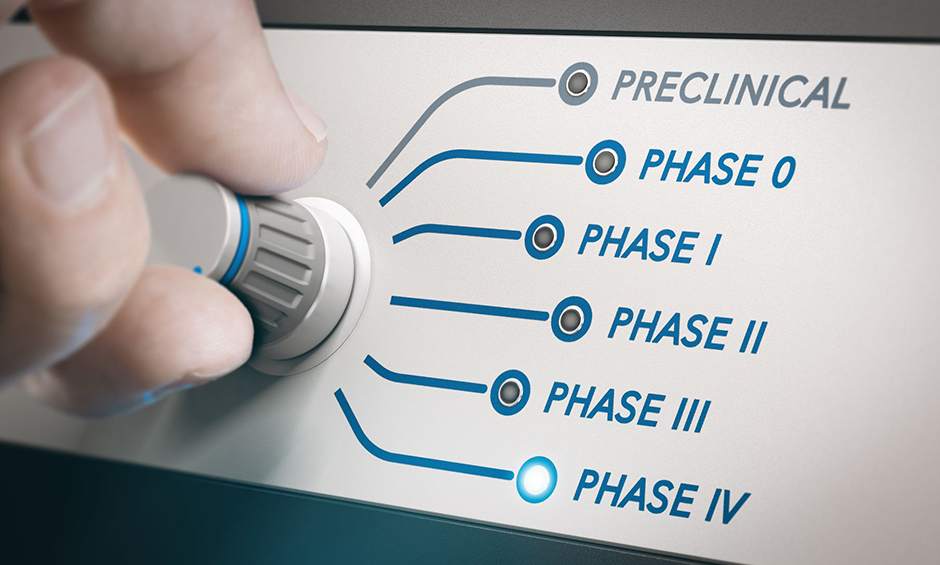Since the year 2000, there have been over 650 medications approved by the U.S. Food and Drug Administration (FDA).1 That number averages to about 30 to 40 per year. Although the FDA receives many applications for drug approval, it is estimated that only 12 percent of drugs are ultimately approved.2 So, why do so few drugs get approved each year? The answer lies within the FDA’s stringent drug approval process. The intent of this system is to guarantee the highest degree of efficacy and safety. The FDA ensures that testing procedures and protocols are met at every level of the approval process. To gain FDA approval, a manufacturer must first submit an investigational new drug application (INDA) based on results from testing that includes drug composition and manufacturing. The FDA also reviews the proposed human testing protocols for safety, ethics, and informed consent with the INDA.2
FDA Clinical Phases I-III
The FDA approval process consists of three major clinical phases. Each phase increases the degree of testing and scrutiny. Once the investigative new drug application has been approved, Phase I can begin.2
Phase I studies involve healthy human subject trials consisting usually of between 20 and 80 subjects.2 The objective for Phase I is to identify the most common side effects as well as how a drug is metabolized and excreted.2
A Phase II study includes hundreds of subjects and looks at a medication’s efficacy against a specific disease or condition, usually at several different doses to find a balance between safety and efficacy. Controlled trials are conducted comparing the new drug to placebo or another product already in the drug class.1
The Phase III study consists of hundreds to thousands of participants that further evaluate a drug’s safety and effectiveness. Phase III focuses on the treatment of broader range of populations, such as older adults, or those with concomitant illnesses. Also, Phase III studies will typically include varied dosing arms to target the maximum effective dose with the highest safety consideration. Following Phase III, the manufacturer files a new drug application (NDA) that puts the drug in line for FDA final review. An FDA “advisory committee” made up of experts on the topic under review will review the NDA and give its opinion on drug safety, effectiveness, and labelling. If acceptable, approval is issued, and the drug is allowed to be marketed and sold.2
The timeframe to complete the different clinical phases and receive FDA approval can take anywhere between two to six years. Some drugs are fast tracked if they treat life-threatening conditions or if they meet an unmet medical need. A prime example would be the recent development and approval of the COVID-19 vaccines.1
FDA-approved drugs continue to be monitored over time. The FDA reviews reports of problems with prescription products in a system called MedWatch and sometimes requests Phase IV data, called post-marketing surveillance, to provide additional data on safety and effectiveness.
Although the FDA approval process is selective and long, it remains an effective process for maintaining safe drug entries into the U.S. health care system.

